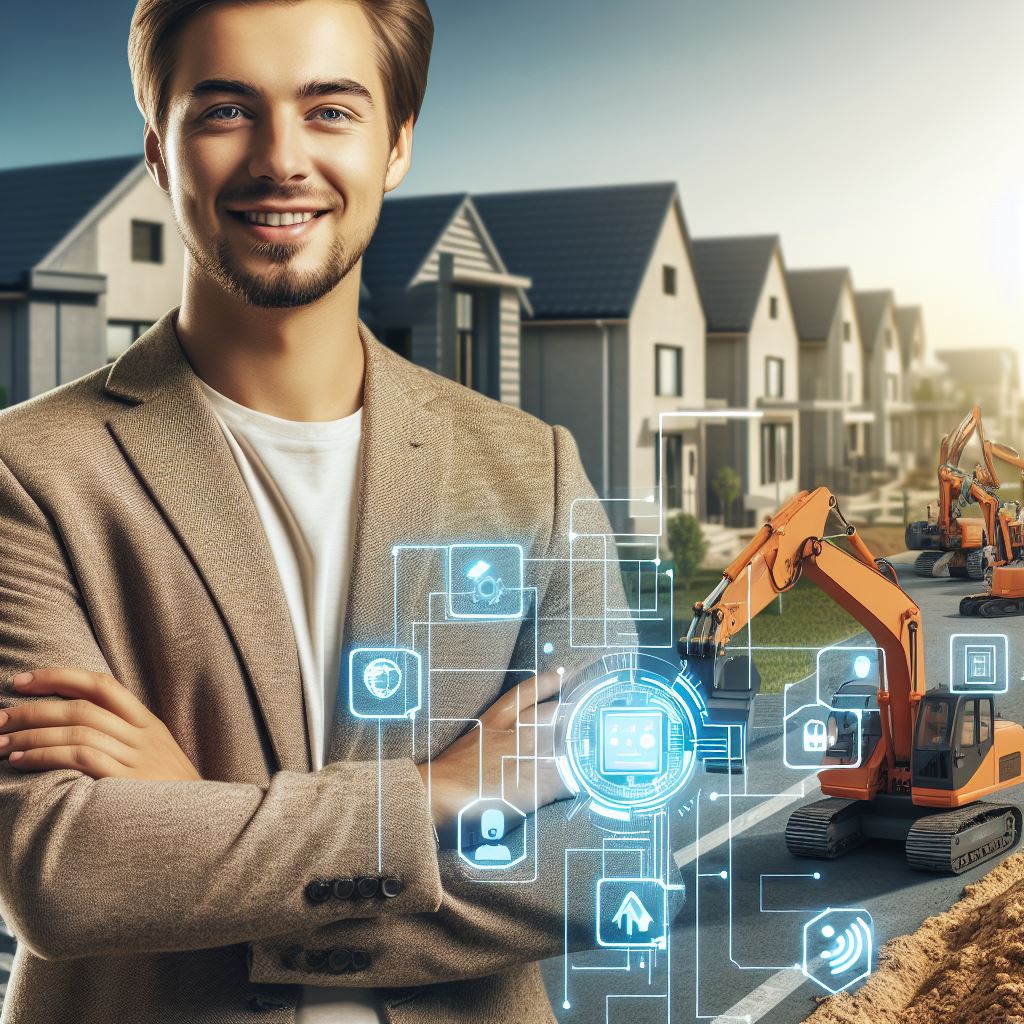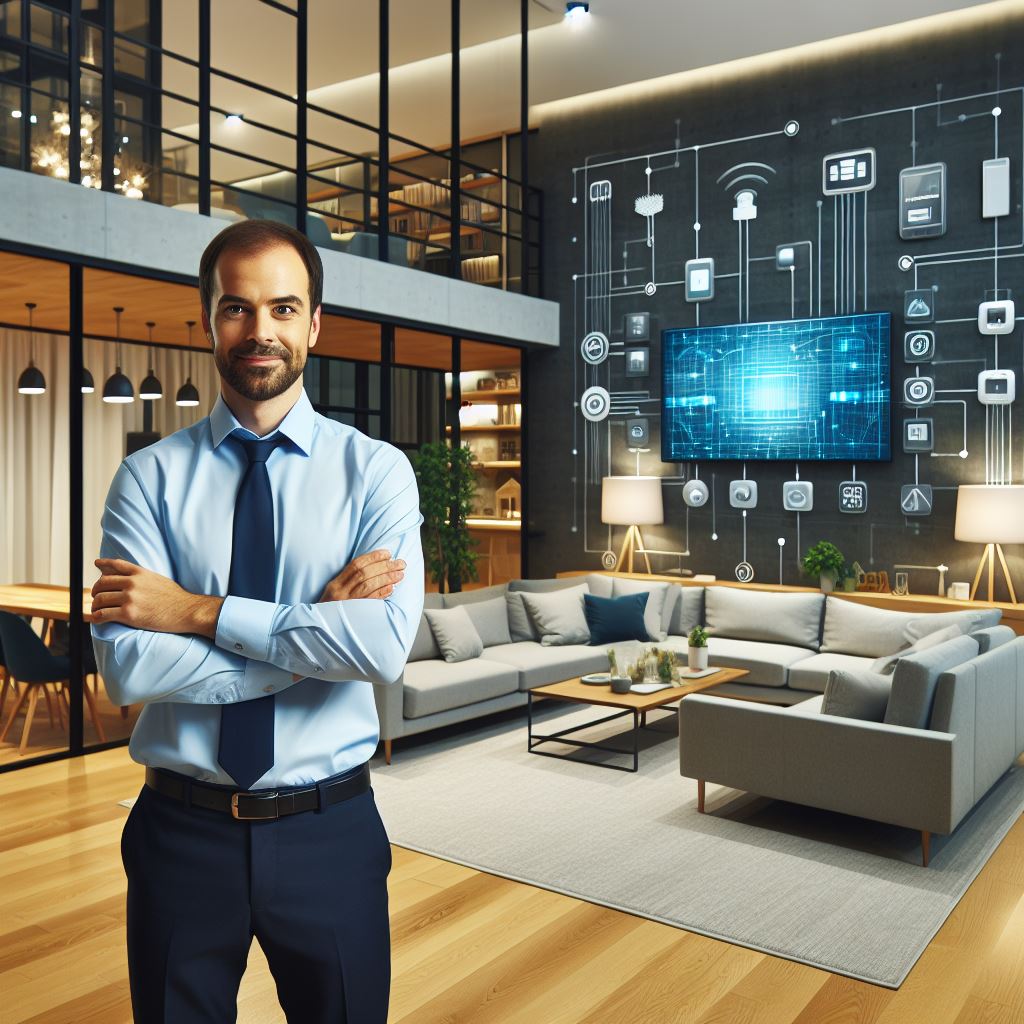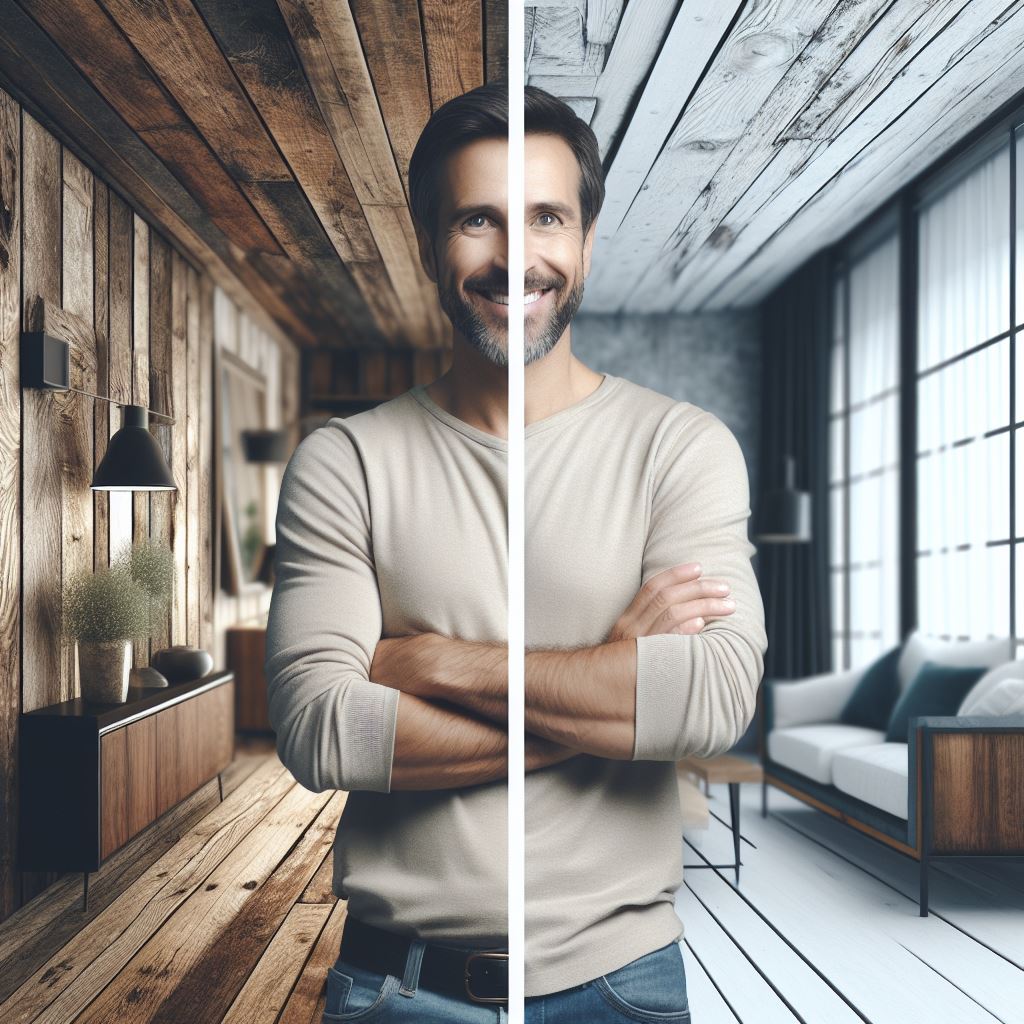Introduction
In this blog post, we will explore Smart Homes Tech in Modern Design.
Smart homes refer to residential spaces that are equipped with advanced technology to automate and control various functions.
These functions include lighting, heating, ventilation, air conditioning, security systems, and home appliances.
Smart homes have gained immense popularity in modern design due to their numerous benefits.
They offer convenience, energy efficiency, enhanced security, comfort, and customization options.
Smart homes also provide remote monitoring and control through smartphones and other devices.
Moreover, the increasing affordability of smart technology has made it accessible to a wider audience, contributing to its popularity.
With the advancement of Internet of Things (IoT) technology, smart homes are becoming more sophisticated and capable of syncing multiple devices and systems effortlessly.
Smart homes have become an integral part of modern design, transforming living spaces into innovative and interconnected environments.
They offer a seamless integration of technology and design, enhancing the overall aesthetics and functionality of homes.
In essence, smart homes are homes equipped with advanced technology that automates and controls various functions.
They have gained popularity due to their convenience, energy efficiency, security, and customization options.
Smart homes have become an essential element in modern design, creating innovative and interconnected living spaces.
Integration of Technology in Home Design
In today’s world, the concept of a smart home is gaining immense popularity.
The integration of technology in home design has revolutionized the way we live, enhancing convenience, security, and energy efficiency.
Incorporation of smart devices and systems
One of the key aspects of a smart home is the incorporation of smart devices and systems.
This includes various systems such as home security and surveillance systems, home automation and control systems, and energy management systems.
Home security and surveillance systems play a vital role in ensuring the safety of the residents.
With CCTV cameras, motion sensors, and smart door locks, homeowners can monitor their properties from anywhere in the world.
They receive real-time alerts in case of any suspicious activities, providing them with peace of mind.
Home automation and control systems have transformed the way we interact with our homes.
With just a few taps on a smartphone or voice commands, homeowners can control lighting, temperature, and home appliances.
This automation not only enhances convenience but also promotes energy efficiency and reduces manual effort.
Energy management systems are crucial in today’s era, considering the need for sustainability.
Smart homes utilize technologies like smart thermostats, solar panels, and energy-efficient appliances to optimize energy usage.
These systems not only help in reducing carbon footprint but also result in cost savings by lowering utility bills.
Benefits of integrating technology in home design
The integration of technology in home design brings several benefits to homeowners. Firstly, it offers increased convenience and comfort.
With automated systems, individuals can control various aspects of their homes effortlessly, such as adjusting the temperature or turning on/off lights.
Furthermore, smart homes provide enhanced security and safety.
With advanced security systems, residents can monitor their homes remotely and quickly react to any potential threats.
This improves overall security and provides a sense of safety.
Lastly, integrating technology in home design leads to significant energy and cost savings.
By managing energy consumption effectively, smart homes can reduce utility bills and contribute to a greener environment.
The ability to remotely control and monitor energy usage ensures that homeowners are conscious of their energy consumption.
In fact, the integration of technology in home design has become crucial in creating smart homes.
Incorporating smart devices and systems, such as home security and surveillance systems, home automation and control systems, and energy management systems, offers numerous benefits like convenience, security, and energy savings.
As technology continues to advance, smart homes will become more accessible and popular, transforming the way we live.
Read: Eco-Friendly Exteriors: Green Trends in 2024
Smart Home Features
Voice-controlled assistants and virtual assistants
Voice-controlled assistants and virtual assistants have become a staple in modern smart homes.
These intelligent systems allow users to control various devices and perform tasks using voice commands.
With the rise of smart speakers, such as Amazon Alexa, Google Assistant, and Apple Siri, homeowners can now effortlessly control their homes using just their voices.
Smart lighting systems
Smart lighting systems are another popular feature in modern smart homes.
With wireless LED lights, homeowners can easily adjust the brightness and color of their lights to create the perfect ambiance.
Color temperature control allows users to switch between warm and cool lighting, depending on their preference or the time of the day.
Additionally, scheduling and automation features enable lights to turn on and off automatically, providing convenience and energy efficiency.
Thermostats and HVAC control
Thermostats and HVAC control are essential components of a smart home, as they help homeowners regulate and optimize their home’s temperature.
Learning thermostats use advanced algorithms to adapt to a household’s patterns and adjust temperature settings accordingly.
Remote temperature control enables users to monitor and adjust the temperature even when they are away from home.
Additionally, energy-efficient HVAC systems can help reduce energy consumption and save money on utility bills.
Read: 2024’s Top 10 Interior Design Trends for Homes
Home Automation and Control Systems
Integration of various smart devices
The integration of various smart devices is a crucial aspect of modern home automation and control systems.
With the advancement of technology, it is now possible to connect and control multiple devices from a centralized control hub.
This integration not only simplifies the management of smart devices but also enhances their functionality and efficiency.
Centralized control hubs, such as smart speakers or smart displays, serve as the command center for all connected devices.
They provide a user-friendly interface that allows homeowners to easily monitor and control various aspects of their smart home.
From adjusting the temperature to turning off lights, these control hubs offer a convenient way to manage and customize the settings of different devices.
Smartphone apps and remote control options take home automation to the next level of convenience.
With the help of dedicated apps, homeowners can control their smart devices even when they are away from home.
Whether it’s turning on the security system or checking if the doors are locked, these apps provide real-time access and control, ensuring peace of mind and security.
Furthermore, the compatibility of home automation systems with different devices and platforms is crucial for seamless integration.
It allows homeowners to choose from a wide range of smart devices and ensures that they work together harmoniously.
Whether it’s smart lights, thermostats, or security cameras, compatibility ensures that all devices communicate effectively, creating a truly interconnected smart home experience.
Automation of everyday tasks and routines
Automating everyday tasks and routines is another key feature of modern home automation systems.
Voice-activated commands, powered by artificial intelligence (AI) assistants like Amazon Alexa or Google Assistant, allow users to control their smart devices through simple voice commands.
By simply saying phrases like “turn off the lights” or “play music,” users can effortlessly control their smart home without lifting a finger.
Scheduling and timers provide the ability to automate specific actions based on pre-set schedules.
For example, homeowners can schedule their lights to turn on at sunset and turn off at a specific time.
This not only enhances convenience but also helps save energy and promotes a more efficient and eco-friendly lifestyle.
Geofencing and presence detection are advanced features that use the homeowner’s location and presence to trigger specific actions.
For instance, when the homeowner’s smartphone enters the geofence, the smart home system can automatically adjust the temperature to their preferred setting or turn on the lights in anticipation of their arrival.
This level of automation ensures a personalized and seamless smart home experience.
In short, home automation and control systems have revolutionized the way we interact with our homes.
The integration of various smart devices, along with centralized control hubs and smartphone apps, provides convenient access and management.
Moreover, the automation of everyday tasks and routines through voice-activated commands, scheduling, geofencing, and presence detection enhances the overall efficiency and comfort of modern smart homes.
Read: Ensuring Quality: Monitoring Your Contractor’s Work

Inclusive Design: Assistive Technology for Accessibility
Smart home features for people with disabilities
Smart homes have revolutionized the way people live, with their integration of technology into everyday objects.
While this technology offers convenience and efficiency for all users, it has also made a significant impact on the lives of people with disabilities.
Inclusive design and the incorporation of assistive technology into smart homes have opened up a whole new world of possibilities for individuals with disabilities.
Voice-controlled devices and interfaces
Voice control is one of the most significant advancements in smart home technology for people with disabilities.
Individuals who have limited mobility or dexterity can now control their entire home environment using voice commands.
From adjusting the temperature and lighting to operating appliances and entertainment systems, voice-controlled devices offer a level of independence that was previously unimaginable.
Smart door locks and entry systems
Smart door locks and entry systems have become an essential feature in inclusive smart homes.
With these systems, individuals with disabilities can easily open and close doors without physical keys or complex mechanisms.
Smart locks can be operated through voice commands, mobile apps, or even remotely from a caregiver’s device, ensuring safe and convenient entry into the home.
Environmental control systems
Environmental control systems allow people with disabilities to adjust and customize their home surroundings according to their specific needs.
These systems integrate with various smart devices, such as thermostats, lighting, and window shades, to create a comfortable and accessible environment.
Users can control these systems using voice commands, mobile apps, or specialized interfaces tailored to their abilities.
Benefits of assistive technology in smart homes
The incorporation of assistive technology in smart homes brings numerous benefits to people with disabilities, enhancing their overall well-being and quality of life.
Independence and autonomy
Assistive technology allows individuals with disabilities to have greater control over their environment, promoting independence and autonomy.
With voice-controlled devices and interfaces, they can perform daily tasks without assistance, empowering them to live more independently.
This increased independence enhances self-esteem and confidence, leading to a higher sense of personal fulfillment.
Improved quality of life
Smart home technology not only improves accessibility but also enhances the overall quality of life for individuals with disabilities.
With assistive features, they can create customized environments that suit their specific needs and preferences.
Whether it’s controlling the lighting to alleviate sensory issues or adjusting the temperature for comfort, smart homes provide a greater sense of comfort and well-being.
Facilitation of daily activities
Assistive technology in smart homes simplifies and facilitates daily activities for people with disabilities.
With the integration of environmental control systems, tasks like adjusting the lighting or opening and closing doors become effortless.
This technology eliminates barriers and streamlines everyday routines, making life more manageable and enjoyable for individuals with disabilities.
In general, the evolution of smart home technology has paved the way for inclusive design and assistive technology to improve accessibility for people with disabilities.
Voice-controlled devices, smart door locks, environmental control systems, and other assistive features empower individuals, providing independence, improving their quality of life, and facilitating daily activities.
The integration of assistive technology in smart homes is a remarkable achievement that has made a significant difference in the lives of many, moving us towards a more inclusive and accessible future.
Read: Building a Solid Relationship with Your Contractor
Challenges and Considerations in Smart Home Design
Building a smart home is an exciting prospect for homeowners, combining modern design with advanced technology.
However, there are several challenges and considerations that need to be addressed when designing and implementing a smart home.
This section explores some of the key challenges homeowners and designers face in creating a smart home.
Privacy and data security concerns
As smart homes rely on interconnected devices and systems, ensuring the security of personal information becomes a major concern.
Protection against hacking and unauthorized access is crucial to maintaining the privacy and safety of homeowners.
Implementing robust security measures and encryption techniques can help alleviate these concerns.
Compatibility issues and technical limitations
Another challenge in smart home design is ensuring the compatibility and interoperability between devices and systems.
Various products and platforms from different manufacturers may have different protocols and standards, making it difficult for them to seamlessly communicate with one another.
Designers must carefully select compatible devices and systems, ensuring a smooth integration process.
Additionally, network infrastructure and Wi-Fi connectivity play a vital role in the functionality of a smart home.
Weak or unreliable networks can lead to devices not functioning as intended, causing frustration for homeowners.
Designing a robust network infrastructure and ensuring reliable Wi-Fi connectivity throughout the home are essential considerations.
Cost implications and affordability
While the benefits of a smart home are undeniable, the initial investment and installation costs may deter some potential adopters.
Smart devices and systems can be expensive, and the overall cost of transforming a traditional home into a smart home can be substantial.
Additionally, long-term maintenance and the need for regular upgrades should also be factored into the overall cost of owning a smart home.
Despite these challenges, advancements in technology, increased competition among manufacturers, and the growing demand for smart home solutions are driving down costs.
Over time, the affordability of smart homes is expected to improve, making them more accessible to a wider range of homeowners.
In review, while smart homes offer numerous benefits in terms of convenience, energy efficiency, and overall comfort, they also pose challenges that need to be carefully considered and addressed during the design process.
Privacy and data security, compatibility issues, and cost implications are just a few factors that require attention.
By overcoming these challenges, homeowners can fully embrace the latest tech in modern design and enjoy the enhanced lifestyle that smart homes have to offer.
Conclusion
Smart homes offer a range of advantages that enhance our daily lives.
With advanced technology, homeowners can enjoy increased convenience, efficiency, and security.
The integration of smart home devices in modern design has revolutionized the way we interact with our living spaces.
Furthermore, smart home technology continues to evolve, with new features and devices constantly being developed.
This ongoing advancement ensures that homeowners can always stay at the forefront of innovative design.
It’s an exciting time for those interested in integrating smart features into their homes, as the possibilities for customization and personalization are endless.
We encourage readers to explore the latest tech trends in smart home design.
From voice-controlled assistants to automated lighting and climate control, there is a vast array of options available.
By embracing smart home technology, homeowners can create a more comfortable and efficient living environment.
So, why not consider integrating smart features into your home?
Take advantage of the convenience and control that smart home technology offers, and transform your living space into a futuristic sanctuary.
With the ever-evolving world of smart home design, the future is now.




